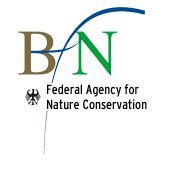
| Project data | |
|---|---|
| Project leader: | Prof. Prof. h. c. Dr. Ursula Siebert |
| Project term: | May 2011-May 2015 |
| Sponsorship: | Federal Agency for Nature Conservation (Bundesamt für Naturschutz (BfN)) |

Project description
The scientific evaluation of the impact of underwater noise on marine vertebrates (harbour porpoises, harbour seals, grey seals and fishes) was only possible on a rudimentary level until now. For the legal assessment of species conservation and approval procedures, further fundamental studies assessing the impacts of underwater noise, on marine vertebrates specifically, are essential. That is why Cluster 7, a research project coordinated by the ITAW of the TiHo Hannover in Büsum, in close collaboration with the BfN, aims to develop verifiable standards to evaluate the impact of underwater noise on marine wildlife. Application-oriented research concerning the potential influence of anthropogenic noise on wildlife is conducted as a part of Cluster 7. The hearing ability of harbour porpoises and seals is studied in different subprojects, as well as investigations into possible impairments of fish by pulsed sound incidents, have been developed in cooperation with national and international partners (University of Aarhus; DW-ShipConsult GmbH; University of Liege; IMARE; DMM Stralsund, HZG) and facilities (Fjord&Baelt Kerteminde; Delphinarium und Rehabilitation Centre Harderwijk; Seal Station Friedrichskoog e.V.; Marine Station Hel).
The acoustic load limit and possible stress reactions of harbour porpoises, induced by anthropogenic underwater noise, are being investigated. In addition, wild harbour seals and porpoises are to be equipped with an automatic trip recorder, which is able to record the current level of noise animals are exposed to in the water. The aim of these investigations is to improve the understanding of the animals´ possible behaviour modifications (escape, diving behaviour, emigration from ``loud`` areas) after underwater noise incidents. To understand the impact of noise in the oceans, sound mapping via underwater microphones is to be conducted in the Natura 2000 conservation areas of the North and Baltic Seas. Subsequently, standardised measurement procedures for mapping sounds will be designed in consultation with other institutions and cluster 2.
Imprint
The underlying scientific studies for this publication were conducted on behalf of the BfN. The editor assumes no warranty for the correctness, exactness and completeness of the information provided as well as for the acceptance of rights of third parties. The expressed opinions and views in the contributions do not have to concur with the editor´s. The responsibility for the content of this publication lies with the author.
The project including all of its parts is protected by copyright. Each utilisation outside the close limits of copyright law is forbidden without the editor´s permission and is punishable. This especially applies to duplications, translations, microfilming and saving and converting in electronic systems. Reproduction, even in excerpts, is allowed with permission of the BfN only.


